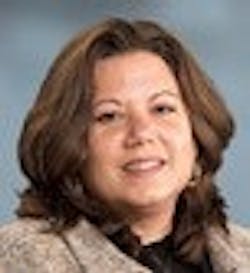Champion, Critic Of Process Safety Remembered
A little over a month has gone by and I am still processing the death of Dr. M. Sam Mannan. We covered the news of his passing right away via a brief news item but I knew it wasn’t enough. I wanted to honor the man on a more personal level; after all, he was a good friend to Chemical Processing.
While we never met face to face, he was one of those people who makes you feel like you are on his short list of favorite colleagues. After reading an incredible tribute from another journalist who had the good fortune to work with him, I realized he treated everyone that way. It’s just who he was. (Grab a tissue and read “Sam Mannan was more than a source. He was a friend.”)
For the last few years we worked together on CP’s Process Safety webinar series – a series that had feet, legs and a brain all because of Dr. Mannan. When we approached him to serve as host for the series he didn’t hesitate to roll up his sleeves. In fact, he even recorded a promo video touting the importance of the series.
He always kicked off his presentations with a “Howdy” – the official greeting of Texas A&M, which is where he served as Regents Professor in the Artie McFerrin Department of Chemical Engineering. After his hearty howdy the chat board would fill up with reciprocal greetings. To this day, his events in the Process Safety series hold our record number of registrants and live attendees. He was a rock star and he was not afraid to tell it like it was when it came to safety.
Indeed, one of last year’s webinars he said “We started our current journey on regulations in 1990 as far as process safety regulation is concerned. And so clearly one might ask, what progress have we made, based on these regulations or have we made any progress? In answering this question, what I can tell you is that a jury is still out.
“We really can't say with any degree of certainty or understanding whether or not we are getting better or we are getting worse.” (see: “Expert Says Safety Regulations Haven’t Made Us Safer”).
When the news broke that Sam had passed, we were crushed. After some time we addressed the issue of the remaining webinars in the Process Safety series. We knew he would want the message to carry on and we are fortunate to have worthy sources to address the topics that Sam laid out for us for the last few events of the year.
He was a champion and a critic of process safety and he never stopped pushing for change. His passion was contagious and I suspect that more than a few disasters were averted because of his teachings.
I was pleased to learn that the Artie McFerrin Department of Chemical Engineering has established an endowed scholarship in his name. The Dr. Sam Mannan Endowed Scholarship is designed to prepare chemical engineers for leadership roles in industry, academia, or government, and will be awarded to a student pursuing an undergraduate degree in Chemical Engineering with a minor in Safety Engineering from Texas A&M University.
If there is a patron saint of Process Safety, his name is Sam. If you need his guidance, just say “howdy.”
Traci Purdum is Chemical Processing’s senior digital editor. She will continue to cover process safety to serve readers and honor her friend and source Dr. M. Sam Mannan. You can email her at [email protected]
[javascriptSnippet ]

